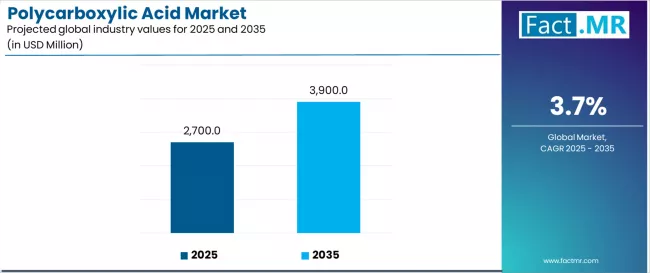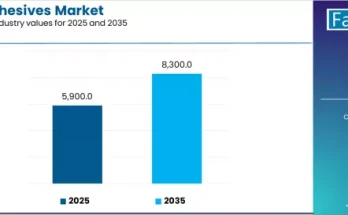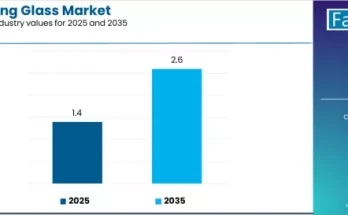Polycarboxylic acids have become essential components in a wide range of industrial and consumer applications, owing to their versatility, chemical stability, and environmentally friendly properties. These multifunctional acids are widely used in detergents, water treatment, textile processing, and various chemical syntheses. As industries focus on sustainability and high-performance materials, the polycarboxylic acid market is witnessing robust growth, with increasing adoption driven by regulatory compliance and evolving industrial requirements.
Market Overview:
Polycarboxylic acids are characterized by the presence of multiple carboxyl functional groups in their molecular structure, which imparts high reactivity and the ability to act as chelating agents, cross-linkers, or dispersants. The market includes various types, such as citric acid, adipic acid, and other specialized polycarboxylic compounds, each catering to different industrial requirements. These acids find extensive use in detergents and cleaning agents, where they enhance water softening and cleaning efficiency. Additionally, they serve as intermediates in chemical synthesis and play a crucial role in corrosion inhibition and textile finishing processes.
Regional Insights:
The adoption of polycarboxylic acids is widespread across regions with strong industrial and chemical manufacturing sectors. Asia-Pacific is emerging as a key market, driven by rapid industrialization, growth in the textile and detergent industries, and increasing environmental awareness. North America leads in technological advancement and regulatory compliance, particularly in water treatment and consumer product applications. Europe continues to show steady demand, supported by stringent environmental regulations and sustainability initiatives. Emerging markets in Latin America and the Middle East are gradually incorporating polycarboxylic acids into industrial processes, reflecting global market expansion opportunities.
Key Trends & Forecast:
Several trends are shaping the polycarboxylic acid market. Sustainability is a major driver, with industries seeking eco-friendly alternatives to traditional phosphates and other chemicals in detergents and water treatment solutions. Innovation in chemical synthesis is enabling the production of high-purity polycarboxylic acids, which improves product performance across industrial and consumer applications. Strategic partnerships and collaborations between chemical manufacturers and end-use industries are fostering R&D efforts to develop specialized acids tailored for specific applications. Additionally, demand for multi-functional chemicals that offer water softening, scale inhibition, and corrosion protection in a single product is increasing, supporting market growth.
Applications & End-Use Outlook:
The detergent and cleaning industry represents the largest end-use segment for polycarboxylic acids. These acids enhance cleaning performance, reduce water hardness, and contribute to environmentally sustainable formulations. In the water treatment sector, polycarboxylic acids serve as scale inhibitors, corrosion protectants, and dispersants, ensuring efficient and safe operations. The textile industry also relies on polycarboxylic acids for finishing and dyeing processes, improving fabric durability and appearance. Other emerging applications include construction chemicals, adhesives, and specialty chemical intermediates, where polycarboxylic acids contribute to performance optimization and process efficiency.
Drivers of Market Growth:
The polycarboxylic acid market is driven by several factors. Increasing consumer awareness and regulatory focus on sustainable and eco-friendly chemicals boost demand in detergents, personal care products, and water treatment solutions. Industrialization and the growth of chemical-intensive sectors such as textiles, construction, and manufacturing create new opportunities for polycarboxylic acid applications. Technological advancements in chemical synthesis and formulation techniques are enabling higher efficiency and product versatility. Furthermore, multi-functionality and compatibility with environmentally sustainable processes make polycarboxylic acids a preferred choice for various end-users.
Challenges and Restraints:
Despite its advantages, the polycarboxylic acid market faces certain challenges. High production costs and the need for specialized manufacturing infrastructure can limit adoption, particularly in emerging regions. Variability in raw material availability and dependence on petrochemical derivatives may create supply chain constraints. Additionally, stringent regulatory requirements and evolving environmental standards necessitate continuous innovation and compliance efforts from manufacturers. Addressing these challenges requires investment in research, sustainable production methods, and strategic partnerships to maintain market competitiveness.
Future Outlook:
The future of the polycarboxylic acid market is promising, with steady growth expected across industrial and consumer segments. Continuous innovation in high-purity and eco-friendly polycarboxylic acids will expand their applications and enhance performance. Emerging markets with expanding industrial activities and rising environmental awareness are likely to drive global demand. Manufacturers are expected to focus on product diversification, strategic collaborations, and investment in sustainable production technologies to strengthen their market presence. As industries increasingly adopt environmentally responsible practices, polycarboxylic acids will remain a critical component in chemical formulations worldwide.
Conclusion:
Polycarboxylic acids play a pivotal role in enhancing industrial efficiency, environmental sustainability, and product performance across multiple sectors. The market’s growth is fueled by technological advancements, rising awareness of eco-friendly solutions, and increasing demand in detergents, water treatment, textiles, and specialty chemicals. Understanding market trends, regional dynamics, and emerging applications can help manufacturers, investors, and industry stakeholders leverage opportunities effectively. As sustainability and high-performance requirements continue to shape industrial and consumer chemical markets, polycarboxylic acids will remain an essential tool for innovation, efficiency, and environmental responsibility.
Browse Full Report – https://www.factmr.com/report/polycarboxylic-acid-market



